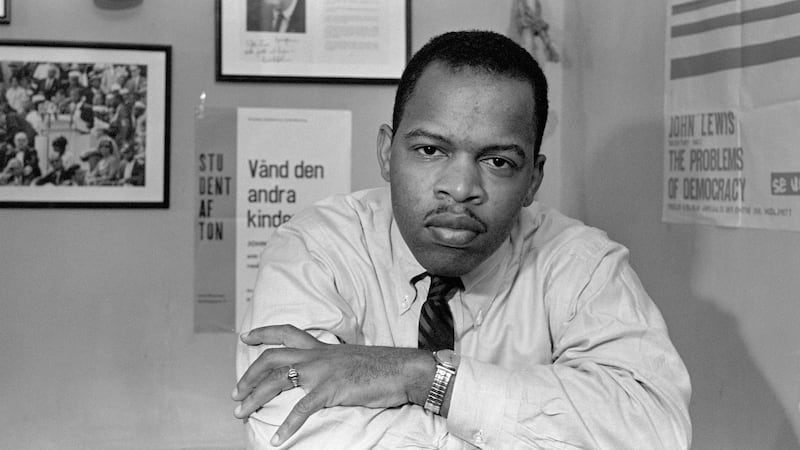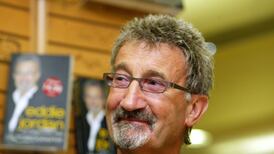Born: February 21st, 1940 Died: July 17th, 2020
John Lewis, a son of sharecroppers and an apostle of nonviolence who was bloodied at Selma and across the Jim Crow south in the historic struggle for racial equality in the US and who then carried a mantle of moral authority into Congress, died on July 17th. He was 80.
Lewis, of Georgia, announced on December 29th that he had stage four pancreatic cancer and vowed to fight it with the same passion with which he had battled racial injustice. “I have been in some kind of fight – for freedom, equality, basic human rights – for nearly my entire life,” he said.
On the front lines of the bloody campaign to end Jim Crow laws, which mandated the racial segregation of public schools, places and transportation, with blows to his body and a fractured skull to prove it, Lewis was a valiant stalwart of the civil rights movement and the last surviving speaker at the historic March on Washington in 1963.
More than a half-century later, after the killing in May of George Floyd, a black man in police custody in Minneapolis, Lewis welcomed the resulting global demonstrations against police killings of black people and, more broadly, against systemic racism in many corners of society. He saw those protests as a continuation of his life’s work, although his illness had left him to watch from the sidelines.
“It was very moving, very moving to see hundreds of thousands of people from all over America and around the world take to the streets – to speak up, to speak out, to get into what I call ‘good trouble’,” Lewis told CBS This Morning in June.
“This feels and looks so different,” he said of the Black Lives Matter movement, which drove the anti-racism demonstrations. “It is so much more massive and all inclusive.” He added, “There will be no turning back.”
He died on the same day as another stalwart of the civil rights movement, the Rev CT Vivian, a close associate of the Rev Martin Luther King jnr.
Freedom Riders
Lewis’ personal history paralleled that of the civil rights movement. He was among the original 13 Freedom Riders, the black and white activists who challenged segregated interstate travel in the US south in 1961. He was a founder and early leader of the Student Nonviolent Coordinating Committee, which coordinated lunch-counter sit-ins. He helped organise the March on Washington, where King was the main speaker, on the steps of the Lincoln Memorial.
Lewis led demonstrations against racially segregated restrooms, hotels, restaurants, public parks and swimming pools, and he rose up against other indignities of second-class citizenship. At nearly every turn, he was beaten, spat upon or burned with cigarettes. He was tormented by white mobs and absorbed body blows from law enforcement.

On March 7th, 1965, he led one of the most famous marches in US history. In the vanguard of 600 people demanding the voting rights they had been denied, Lewis marched partway across the Edmund Pettus Bridge in Selma, Alabama, into a waiting phalanx of state troopers in riot gear.
Ordered to disperse, the protesters silently stood their ground. The troopers responded with tear gas and bullwhips and rubber tubing wrapped in barbed wire. In the melee, known as Bloody Sunday, a trooper cracked Lewis’ skull with a billy club, knocking him to the ground, then hit him again when he tried to get up.
Televised images of the beatings of Lewis and scores of others outraged the nation and galvanised support for the Voting Rights Act, which president Lyndon B Johnson presented to a joint session of Congress eight days later and signed into law. A milestone in the struggle for civil rights, the law struck down the literacy tests that black people had been compelled to take before they could register to vote and replaced segregationist voting registrars with federal registrars to ensure that they were no longer denied the ballot.
Once registered, millions of African Americans began transforming politics across the south. They gave Jimmy Carter, from Georgia, his margin of victory in the 1976 presidential election and their voting power opened the door for black people, including Lewis, to run for public office. Elected in 1986, he became the second African American in Congress from Georgia since the period following the American civil war.
While Lewis represented Atlanta, his natural constituency was disadvantaged people everywhere. Known less for sponsoring major legislation than for his relentless pursuit of justice, his colleagues called him “the conscience of the Congress”.
Preacher
John Robert Lewis grew up with all the humiliations imposed by segregated rural Alabama. He was born on February 21st, 1940, to Eddie and Willie Mae (Carter) Lewis near the town of Troy on a sharecropping farm owned by a white man. After his parents bought their own farm – 110 acres for $300 – John, the third of 10 children, shared in the farm work, leaving school at harvest time to pick cotton, peanuts and corn. Their house had no plumbing or electricity. In the outhouse, they used the pages of an old Sears catalogue as toilet paper.
John was responsible for taking care of the chickens. He fed them and read to them from the Bible. He baptised them when they were born and staged elaborate funerals when they died.
“I was truly intent on saving the little birds’ souls,” he wrote in his memoir, Walking With the Wind (1998). “I could imagine that they were my congregation. And me, I was a preacher.”
His family called him “Preacher,” and becoming one seemed to be his destiny. He drew inspiration by listening to a young minister named Martin Luther King on the radio and reading about the 1955-56 Montgomery bus boycott. He finally wrote a letter to King, who sent him a round-trip bus ticket to visit him in Montgomery, in 1958.
By then, Lewis had begun his studies at American Baptist Theological Seminary (now American Baptist College) in Nashville, Tennessee, where he worked as a dishwasher and janitor to pay for his education.
In Nashville, Lewis met many of the civil rights activists who would stage the lunch counter sit-ins, Freedom Rides and voter registration campaigns. They included the Rev James M Lawson jnr, who was one of the nation’s most prominent scholars of civil disobedience and who led workshops on Gandhi and nonviolence. He mentored a generation of civil rights organisers, including Lewis.
Lewis’ first arrest came in February 1960, when he and other students demanded service at whites-only lunch counters in Nashville. It was the first prolonged battle of the movement that evolved into the Student Nonviolent Coordinating Committee.
In three months, after repeated well-publicised sit-ins, the city’s political and business communities gave in to the pressure, and Nashville became the first major southern city in the US to begin desegregating public facilities.
But Lewis lost his family’s goodwill. When his parents learned that he had been arrested in Nashville, he wrote, they were ashamed. They had taught him as a child to accept the world as he found it. When he asked them about signs saying “Colored Only,” they told him, “That’s the way it is, don’t get in trouble.”
But as an adult, he said, after he met King and Rosa Parks, whose refusal to give up her bus seat to a white man was a flash point for the civil rights movement, he was inspired to “get into trouble, good trouble, necessary trouble”.
Getting into “good trouble” became his motto for life.
In 1998 he married Lillian Miles, a librarian, teacher and former Peace Corps volunteer. She died in 2012. Lewis’ survivors include several siblings and his son, John-Miles Lewis.
– New York Times













